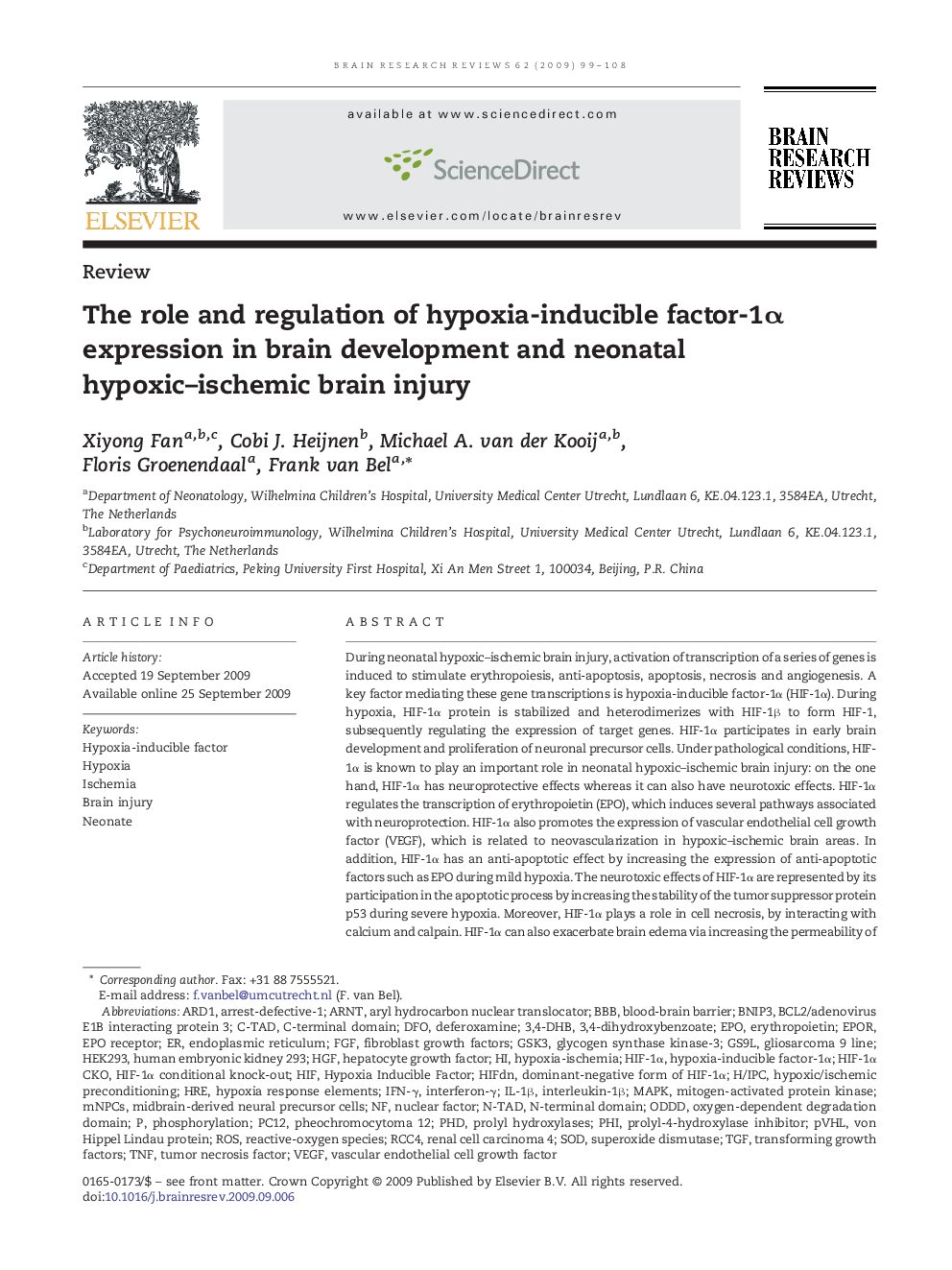| Article ID | Journal | Published Year | Pages | File Type |
|---|---|---|---|---|
| 4333702 | Brain Research Reviews | 2009 | 10 Pages |
During neonatal hypoxic–ischemic brain injury, activation of transcription of a series of genes is induced to stimulate erythropoiesis, anti-apoptosis, apoptosis, necrosis and angiogenesis. A key factor mediating these gene transcriptions is hypoxia-inducible factor-1α (HIF-1α). During hypoxia, HIF-1α protein is stabilized and heterodimerizes with HIF-1β to form HIF-1, subsequently regulating the expression of target genes. HIF-1α participates in early brain development and proliferation of neuronal precursor cells. Under pathological conditions, HIF-1α is known to play an important role in neonatal hypoxic–ischemic brain injury: on the one hand, HIF-1α has neuroprotective effects whereas it can also have neurotoxic effects. HIF-1α regulates the transcription of erythropoietin (EPO), which induces several pathways associated with neuroprotection. HIF-1α also promotes the expression of vascular endothelial cell growth factor (VEGF), which is related to neovascularization in hypoxic–ischemic brain areas. In addition, HIF-1α has an anti-apoptotic effect by increasing the expression of anti-apoptotic factors such as EPO during mild hypoxia. The neurotoxic effects of HIF-1α are represented by its participation in the apoptotic process by increasing the stability of the tumor suppressor protein p53 during severe hypoxia. Moreover, HIF-1α plays a role in cell necrosis, by interacting with calcium and calpain. HIF-1α can also exacerbate brain edema via increasing the permeability of the blood–brain barrier (BBB). Given these properties, HIF-1α has both neuroprotective and neurotoxic effects after hypoxia–ischemia. These events are cell type specific and related to the severity of hypoxia. Unravelling of the complex functions of HIF-1α may be important when designing neuroprotective therapies for hypoxic–ischemic brain injury.
